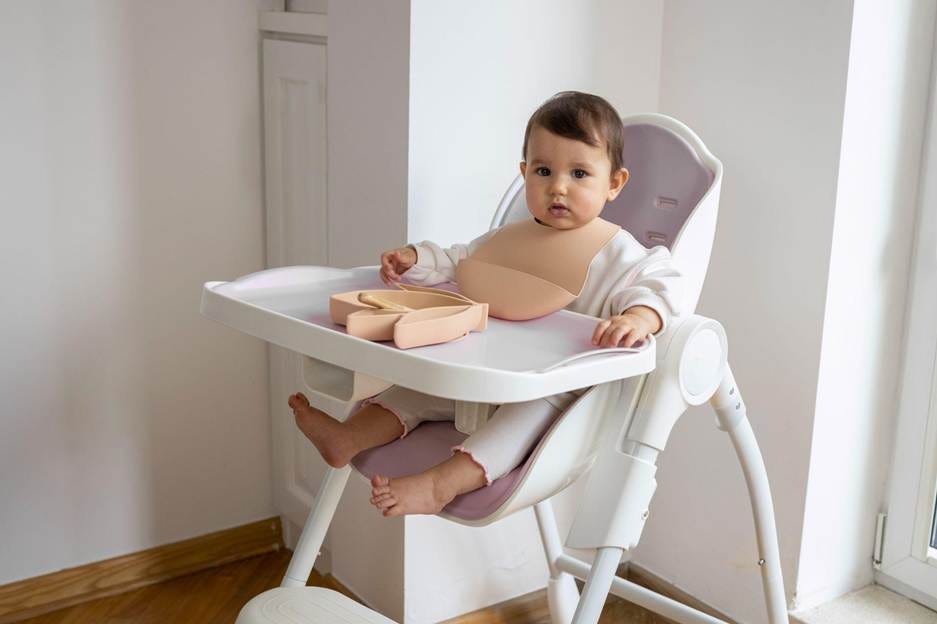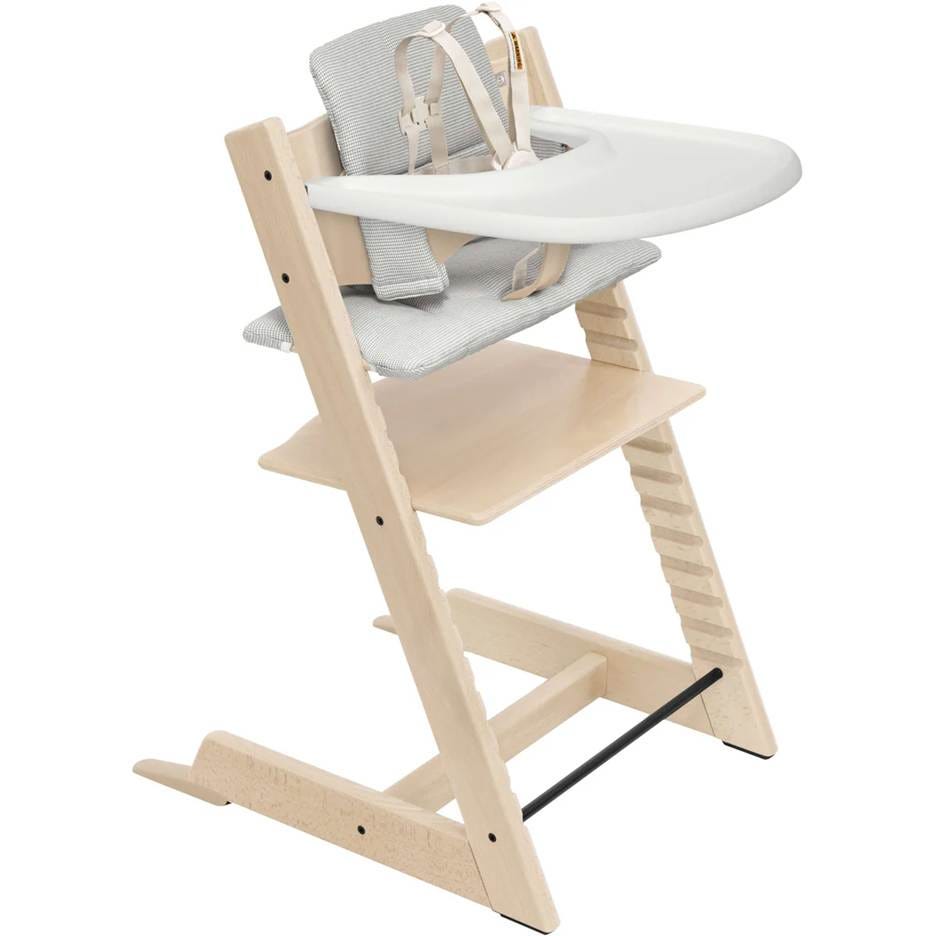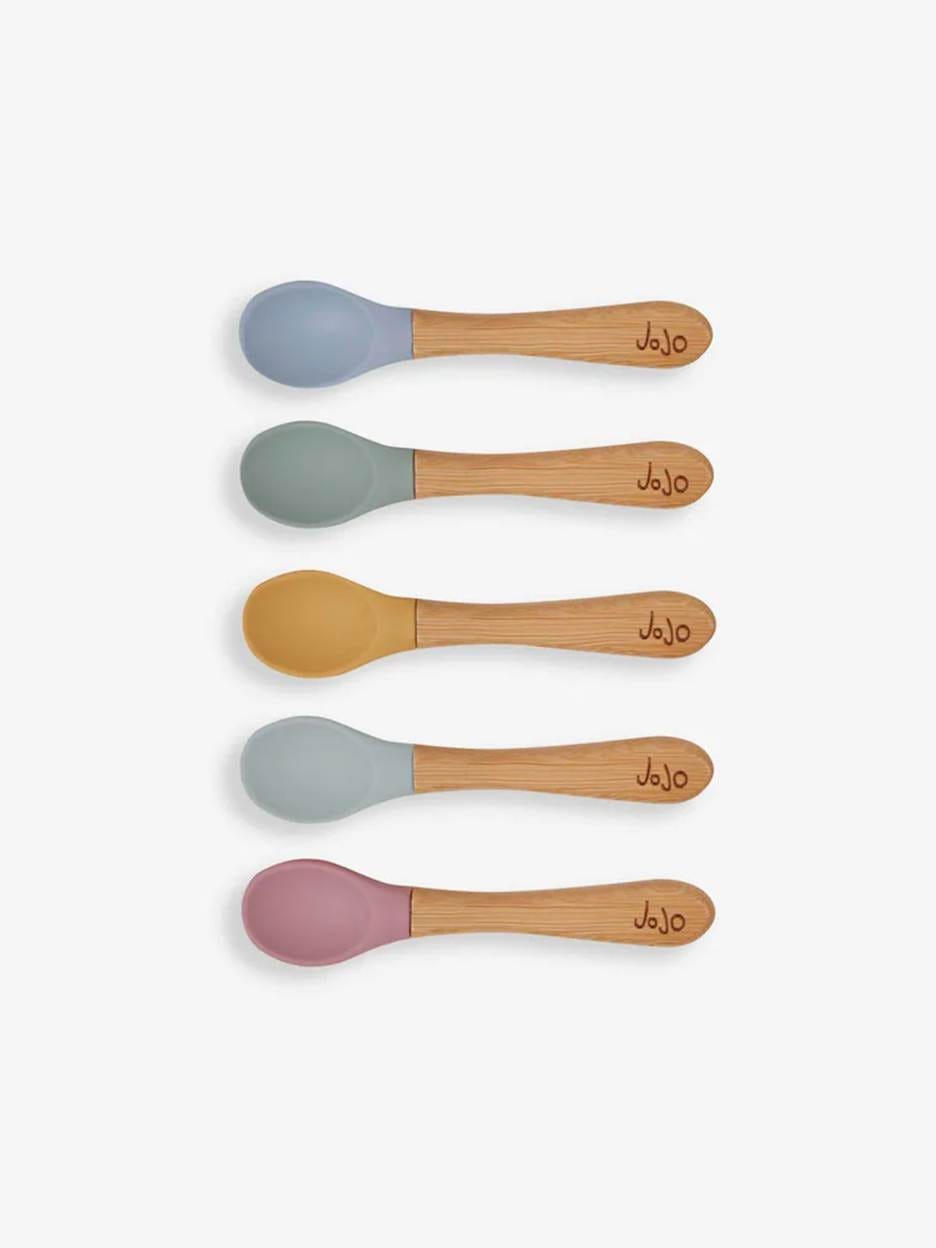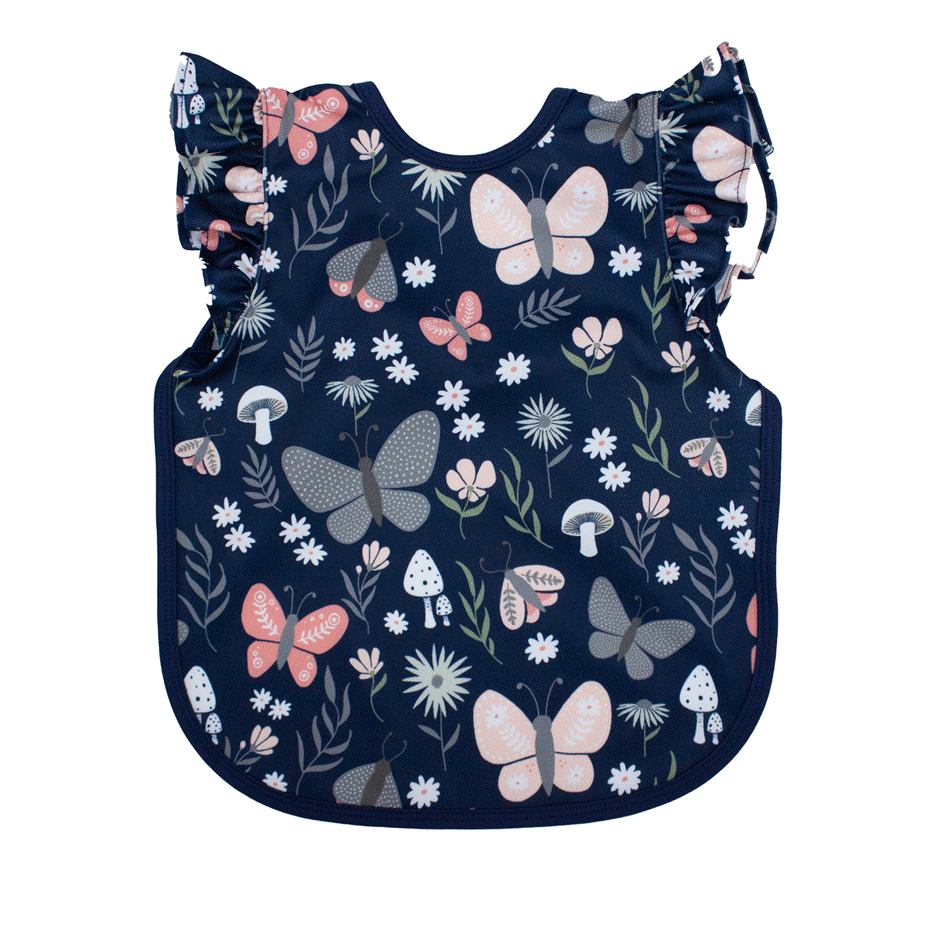Starting solids for your baby can feel overwhelming. Walk into any baby store (or even scroll through Amazon), and you’ll find endless aisles of high chairs, spoons, plates, cups, and more. But what do you actually need? In this episode of the Modern Indian Parent Podcast, hosts Sanchita Daswani (pediatric nutritionist) and Rinie Gupta (pediatric sleep consultant) cut through the clutter and share practical advice on what’s essential, what’s optional, and what you can skip.
High Chairs: Necessity or Option?
Rinie recalls starting her baby on solids in a bouncer because the high chair options felt overwhelming. But Sanchita recommends a proper high chair for three key reasons:
● Safety: Babies need to be upright to swallow and digest food properly. Reclined positions can increase choking risks—even with purees.
● Routine: A high chair creates a designated mealtime space.
● Practicality: Babies eventually wiggle out of laps, strollers, or couches.
Choosing the Right High Chair
Sanchita recommends looking for these features:
● Fully upright backrest (no recline).
● Adjustable footrest for stability.
● Removable, easy-to-clean tray (because mealtime will get messy).
● Right size: The baby’s elbows should rest comfortably on the tray.
She adds that while wooden chairs often provide the best support, budget-friendly options like IKEA’s Antilop can work well—with simple hacks like adding a cushion or DIY footrest. Other good options include Stokke (though pricey but long-lasting), Beaba, and Joie high chairs. Sanchita emphasizes that you don’t always need to splurge—many models can be adjusted with small hacks to work just as well.
Can Babies Eat on Floor Chairs?
While floor seats may look convenient, Sanchita says most don’t support proper posture. Babies often hunch, which is bad for digestion and eating skills. She cautions against using them, except for rare brands designed with a straight back.
Overcoming High Chair Resistance
What if your baby refuses the high chair?
● Check the root cause: It could be timing (too sleepy or not hungry), a milestone phase (wanting to crawl/walk), or negative associations.
● Avoid punishment: Don’t use the high chair as a “time-out.”
● Make it fun: Do a quick activity before meals so kids sit longer.
Rinie adds that their mistake was turning the high chair into a “threat,” which backfired. Instead, it should remain a positive, safe mealtime spot.
Best Spoons for Self-Feeding
Sanchita remembers buying spoons just by color! Now, she recommends:
● Short silicone spoons (like Num Num or Easy Peasy) — perfect for tiny hands and gentle on gums.
● Avoid long spoons — babies struggle with control.
● Skip steel at first — too harsh for little gums, though bowls can still be steel.
Rinie shares her “spoon roulette” hack: preload a second spoon so the baby willingly swaps.
Choosing Plates for Babies
Plates are about more than presentation, they help babies build eating skills.
● Silicone suction plates prevent tossing.
● Skip wooden plates at first—they’re often too bulky for babies under one.
● Rotate materials: Some babies reject silicone due to detergent smells; BPA-free plastic or stainless steel suction plates can be alternatives.
Cups and Water Introduction
Do babies need water before one year? Not really because milk is enough. Still, introducing water teaches skills:
● Start with tiny open cups at 6 months (a few sips after meals).
● Introduce straw cups at 7–8 months.
● Skip sippy cups and 360 cups—they don’t help oral development and can even pose risks.
Sanchita recommends brands like Easy Peasy, Philips Avent, or Munchkin straw cups.
Nibblers: Are They Necessary?
Those mesh or silicone fruit nibblers? Sanchita says no. They prevent babies from truly engaging with food. Exceptions:
● For teething (use frozen fruit puree or milk popsicles instead).
● For pomegranate (a choking hazard).
● For babies struggling in the first week of solids.
Otherwise, let them touch, taste, and feel real food.
Investing in Blenders for Baby Food
Many parents wonder if they really need to buy a special baby food blender or steamer-blender combo. Sanchita says it depends on your kitchen setup and feeding approach.
If you plan to offer a mix of purees and finger foods (which she often recommends), you’ll need to steam vegetables and blend them to the right texture. But that doesn’t mean you must buy an expensive gadget.
● Already own a steamer and blender? Use those—you don’t need anything extra.
● Limited kitchen space or sharing appliances? A dedicated baby blender might be helpful.
● Steaming over boiling: Always steam veggies instead of boiling to preserve nutrients.
As Rinie points out, many parents prefer a separate blender simply so baby food doesn’t pick up the strong flavors of regular Indian cooking (like garlic or spices). A basic blender reserved just for baby meals can work just fine.
Bottom line: A baby food blender is convenient but not a must-have. If your kitchen is set up for steaming and blending, you can skip the splurge.
Bibs: Essential or Optional?
According to Sanchita, bibs are worth it!
● Start with cloth bibs — lightweight and gentle.
● Avoid silicone at first — they can strain little necks.
● Move to silicone bibs around 9–10 months for better mess control.
Some parents skip bibs altogether, feeding babies in just a diaper, but bibs help build cleaner habits.
Final Takeaway
Starting solids doesn’t mean buying everything on the shelves. As Sanchita says:
“It’s worth investing in the right tools, not in all the tools.”
Focus on safety, comfort, and creating a positive mealtime routine. Skip the fads, and remember—eating is a life skill your baby will carry forever.
64. High Chairs, Spoons & Plates: What your baby really needs!
Are you overwhelmed by the choices for your baby's first meals? Discover the essentials you really need to make the transition to solids smooth and enjoyable! Join Sanchita Daswani and Rinie Gupta in this insightful episode of the Modern Indian Parent Podcast as they demystify the world of starting solids for your little ones. From high chairs to cutler…






